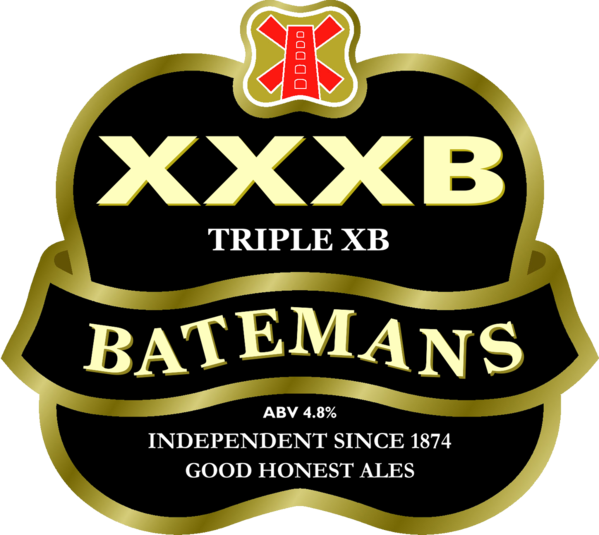Tears and cheers at Batemans as XXXB celebrates 40 glorious years
Added: Wednesday, January 10th 2018
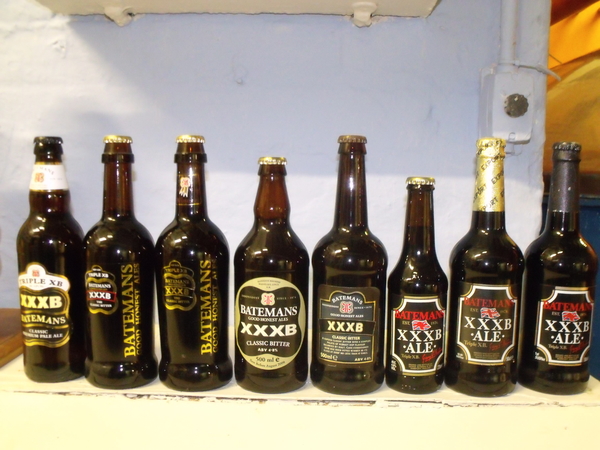
Brewing good beer is about passion and commitment – but it can also be an emotional affair. There were lumps in the throat and even a few tears at Bateman’s brewery when its famous XXXB celebrated its 40th anniversary on 8 January 2018.
There for the event were brewers past and present with 60 years’ experience between them. They included Dennis Hartley, now aged 88, who brewed at Batemans between 1959 and 1975. Ken Dixon followed from 1976 to 1984, while Martin Cullimore put in a staggering 33 years. The current brewer, Scott Lawrence, has been at the brewery for three years and stood in awe of his grizzled predecessors.
It was Ken Dixon who first brewed XXXB in February 1978 and he and his fellow craftsmen were at the brewery in Wainfleet, Lincolnshire – founded in 1874 -- not only to celebrate its 40th anniversary but to see it restored to its original strength of 4.8 per cent – it had slipped to 4.5 per cent over the intervening years.
XXXB is an emotional beer for the Bateman family, now headed by Stuart and Jaclyn as joint managing directors. Back in the 1980s the future of the brewery was cast in doubt when some family members wanted to sell up and retire to the Channel Islands. But George Bateman, then in charge, with his wife Pat and Stuart and Jaclyn, fought a long and arduous battle to raise the funds to buy out their relatives.
They succeeded in 1986 and, to crown their achievement, won CAMRA’s Champion Beer of Britain award that very year with XXXB. As I said to George Bateman at the time: “Who writes your script?”
The beer has gone on to win further CBoB awards, including Champion Best Bitter and Champion Premium Beer.
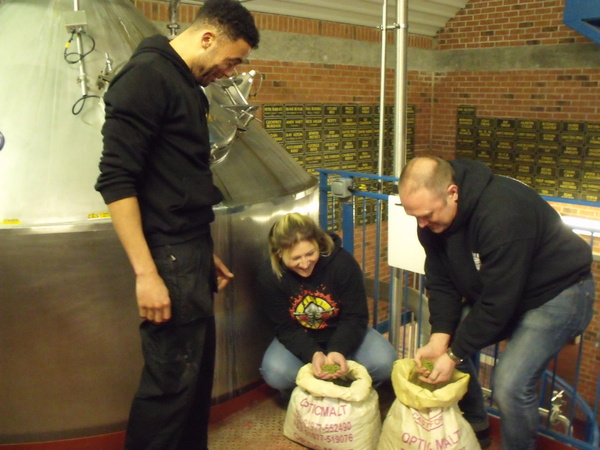
To emphasise the importance of beer lovers to the success of the brew, two drinkers were also on hand on 8 January to help celebrate XXXB’s 40th anniversary. Batemans had run a quiz on Facebook in which people were asked to name five of the brewery’s beers. The first names out of the hat with the correct answers would be invited to join Scott Lawrence and brew the special batch.
By sheer good fortune, the winners were Michael and Hannah Borrill from Lincoln, which is within easy striking distance of Wainfleet. They had the daunting task of being in the brewhouse at 5.45am on a bitterly cold day to start the mash. (They are seen above with brewer Scott Lawrence.)
With Scott by their side, they began the day by tipping sacks of grain into the mash tun, which had already been warmed by hot water. The grains were Crisps pale Flagon malt, with crystal, pale chocolate and wheat malts from Fawcetts. The main pale grain has changed over the years, from Maris Otter, to Optic and now Flagon. Gypsum and calcium had been added to the water to harden it, making it ideal for pale ale production.
As brewing “liquor” and grain poured into the tun and formed a thick porridge-like mass on the base, I asked Scott if he’d trained at Brewlab or Heriot-Watt School of Brewing.
“No,” he said, “I learned alongside Martin Cullimore.” Scott joined Batemans on work experience three years ago and is now head brewer. His knowledge is impressive even though he admits “I was rubbish at science at school.”
He’s keen to make some changes to the beers. For example, he wants to move from hop pellets to whole flowers and to phase out Slovenian Bobek from XXXB and use just English Challenger and Goldings varieties.
With Michael and Hannah, he’s brewing 60 barrels of XXXB. The mash temperature is 65-70 degrees C and during the next few hours natural enzymes in the grain will convert starch into a fermentable sugar known as maltose.
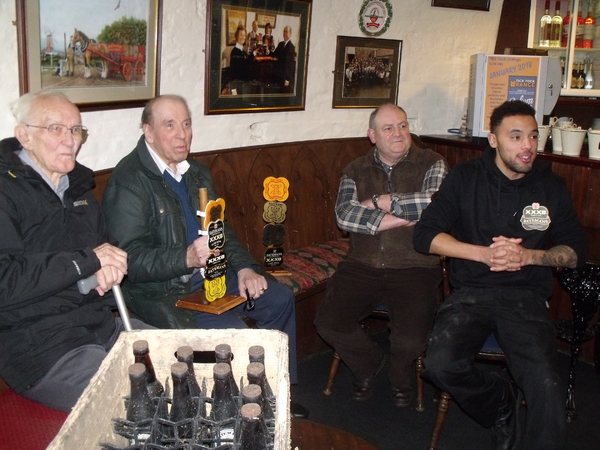
While nature runs its course, we move to the comfort of Mr George’s Bar – named after the late George Bateman – at the base of Bateman’s famous ivy-clad windmill. Stuart Bateman welcomes the four generations of brewers (left to right: Dennis Hartley, Ken Dixon, Martin Cullimore and Scott Lawrence) and cracks open bottles of a vintage ale, BBB, 7.5 per cent and brewed in 1964. They had been forgotten and found in a crate in a dark corner of the brewery.
We wonder if the beer will still be drinkable after all these years.
To our delight, when the rusty caps come off, the beer pours a superb clear amber colour and Dennis Hartley’s daughter Zoë is spot on when she says it tastes like Oloroso sherry. The day is getting better all the time...
Back in the brewhouse, it’s time for the run-off. Inside the mash tun, metal arms revolve, spraying the thick crust of malt with more pure water to extract any final, stubborn sugars: this is known as sparging.
Scott has to check there’s been full conversion of starch to sugar and he pours samples of the sugary extract, called wort, into small glasses for the Borrills and me to taste. After Oloroso sherry, Hannah and I agree the wort tastes like Horlicks.
The run-off is a slow process, with the wort running into a receiving vessel called the underback. We have time for a quick lunch in the nearby Woolpack pub. It’s tempting to match the food with XXXB but with more work to do we settle for glasses of Bateman’s Gold.
Back at the brewery, like actors waiting in the wings, it’s time for hops to make an appearance. Michael is becoming an expert in slashing open sacks with a Stanley knife and he uses his skills to pass open sacks to Hannah, who pours the blend of Bobek, Challenger and Goldings into the copper, where the wort is already gushing in. Hops and wort will be vigorously boiled for around one hour and half, with a further addition of hops towards the end of the boil. The late addition ensures the “hopped wort” will be brimming with rich hop aromas and flavours.
There’s urgent work to do in the laboratory. Scott impresses us with his knowledge as he checks the original gravities, ABVs and colour ratings of previous brews of Gold and XB. Then, most important of all, he takes yeast samples and checks them under a microscope to make sure there are no bad cells that could lead to a sour brew.
Hannah and Michael check the cells and then it’s my turn. I say a quick prayer to Louis Pasteur, peer through the lenses and see only happy, dancing pure cells. The beers will be fine, Scott announces, as though we had any doubts.
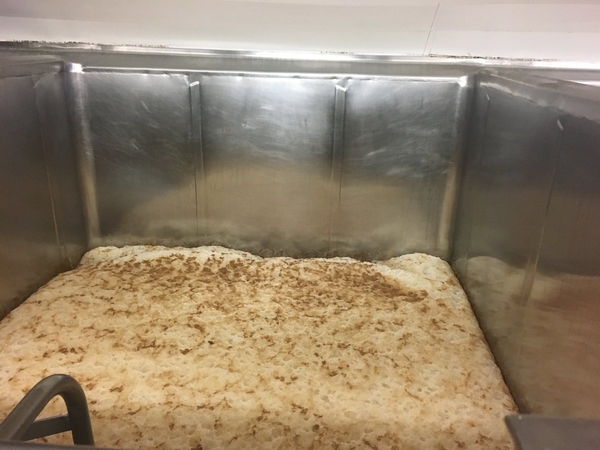
The day is almost done but the most dramatic finale is yet to come. The hopped wort has been cooled and we hurry to the fermenting room, with its open square vessels. We pass vessels already filled with fermenting beers that give off promising and tempting aromas of grain and hops.
Hopped wort floods into the vessel where we line up. Hannah becomes the Goddess of Beer. She’s handed a bucket and pours a slurry of liquid yeast into the wort. One floor below brewery workers pump oxygen into the wort to make sure yeast and liquid are thoroughly mixed.
Scott says fermentation will last for six days as the yeast hungrily turns sugars into alcohol and carbon dioxide. The beer will then rest in a conditioning tank for a few days, with a further week in casks before it goes to trade. It will be available in bottle as well as on draught.
It’s time for farewells. Out of respect for their ages, Dennis Hartley and Ken Dixon have already left. The rest of us shake hands or kiss cheeks, and head for cars and trains.
Now it’s the hardest time, waiting to taste the new and revived XXXB. Happy 40th old war horse.
